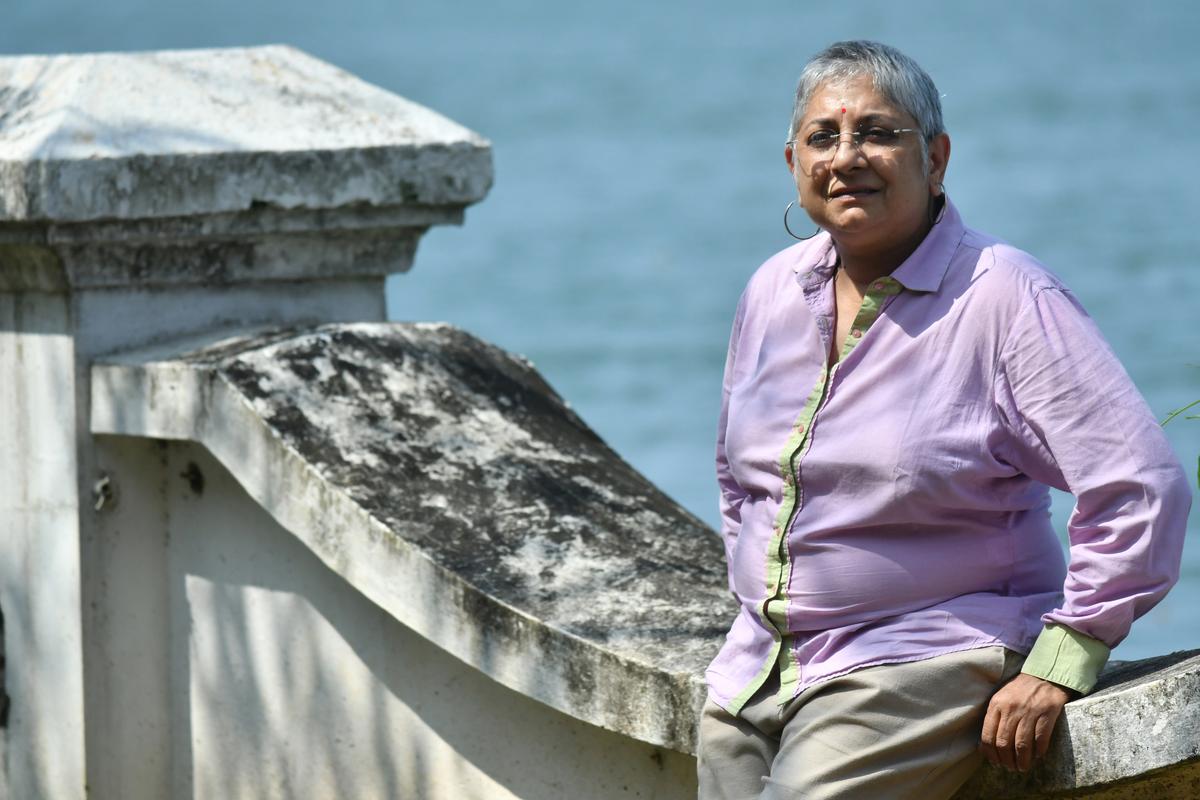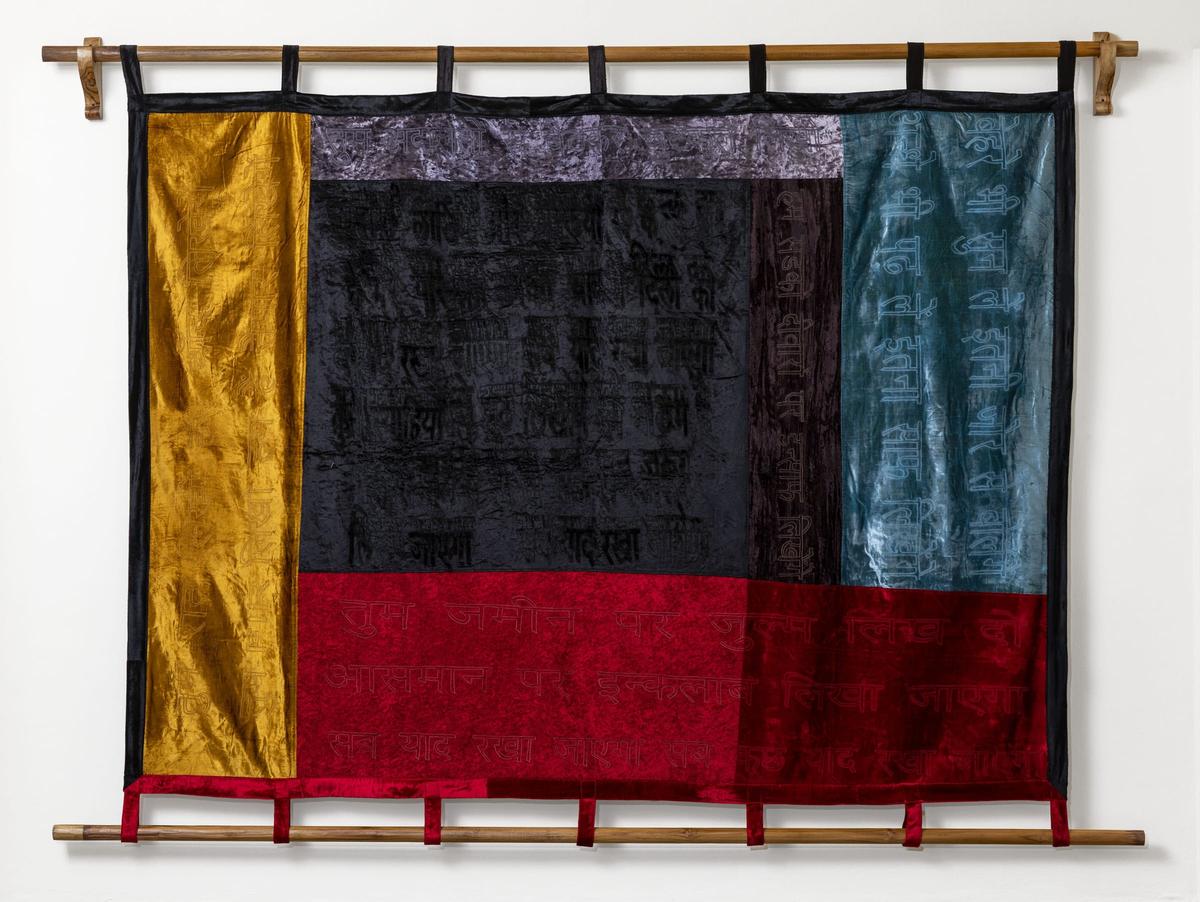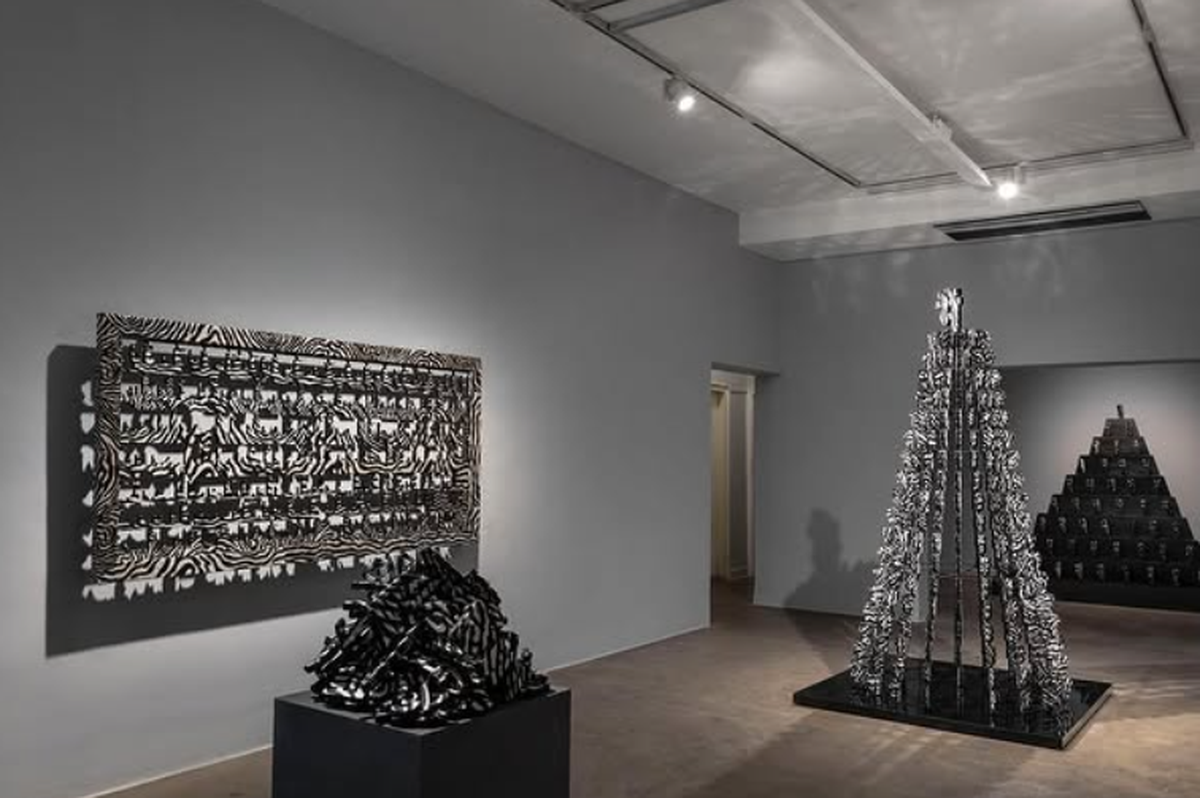Last week, poet Aamir Aziz accused Anita Dube, one of India’s leading contemporary artists, of using his words without permission in four artworks exhibited at Vadehra Art Gallery in New Delhi. The phrase in question, Sab Yaad Rakha Jayega (Everything will be remembered), became a rallying cry during the 2019-2020 protests against the Citizenship Amendment Act legislation that excluded Muslims and challenged India’s secular foundations. Aziz’s poem captured the rage and hope of a generation. Dube’s use of it — without credit or consent — raises larger questions about solidarity, ownership, and the widening gap between the art world and the political realities it often claims to engage with.
Aamir Aziz
Solidarity or extraction
“Let’s be clear. If someone holds my poem in a placard at a protest, a rally, a people’s uprising, I stand with them. But this is not that,” Aziz wrote in an Instagram post addressed to what he called the “entitled section of the art world”. “This is not solidarity… This is outright cultural extraction and plunder, stripping authors of autonomy while profiting off their voices.”
In response, Dube admitted to an “ethical lapse” — one that, legally, could amount to copyright infringement. In a Facebook post, she invoked the ethos of the commons and copyleft, mourning the “lost old world where there were fellow traveller solidarities”, when political art circulated freely as collective property in service of resistance.
But this was not activism. This was a commercial gallery show, where works may cumulatively have been priced between ₹80 lakh and ₹1 crore, according to a dealer source.

Anita Dube at the Kochi-Muziris Biennale
| Photo Credit:
Thulasi Kakkat
Dube’s exhibition, Three Storey House, was conceived as a critique of authoritarianism, using protest poetry and symbolism to comment on India’s current political climate. In intention, it aligned with Aziz’s message. But as this controversy makes clear, solidarity is not built on shared ideas alone. It demands consent, collaboration, and mutual respect.
As writer and activist Kavita Krishnan noted in response to Dube’s post: “Aamir is a young poet with no resources at all compared to yours. Surely you should have respected him enough to speak to him first, get his consent, and make sure he was credited… The issue isn’t monetization, or market, or even copyright. It’s a question of respect. His visibility comes with dire risks because he is a Muslim, without wealth or privilege. Two artists can collaborate — but with mutual respect.”

After Aamir Aziz
| Photo Credit:
vadehraart.com
The lost commons
India’s contemporary art scene emerged after the economic liberalisation of the 1990s with minimal public infrastructure. It was shaped by collective ambition: artists formed collectives, collectors opened museums, and initiatives like the India Art Fair began charting a global footprint. Despite its private foundations, the scene carried a strong spirit of collaboration.

Anita Dube was both a product — and a pioneer — of that spirit. As a former critic and member of the Marxist-influenced Indian Radical Painters and Sculptors Association in Baroda, and later as a co-founder of the KHOJ International Artists’ Association in 1997, she helped imagine a “co-operative, non-hierarchical” space for experimentation. In 2018, she became the first woman to curate the Kochi-Muziris Biennale, an artist-led platform that began as a rejection of art’s growing commercialisation.
But today, that ethos feels increasingly hollow. Rather than uniting across caste, class, religious, and institutional lines to resist authoritarianism, the Indian art world often operates in silos. One world caters to elite collectors, galleries, and biennials. The other, often made up of artists outside the formal art world, speaks, precariously, to the street. Their paths, increasingly, do not cross.

Three Storey House at Vadehra Art Gallery
| Photo Credit:
vadehraart.com
Responsibility amid rising markets
A counterpoint comes from artist Sameer Kulavoor, who also engaged with Aziz’s poetry. His timelapse video Malbe Ka Dher (which depicted the basic shape of a home morphing from one uncomfortable form to another, questioning the sense of comfort and permanence associated with the space) borrowed its title from one of Aziz’s poems. “I came across the poem on Instagram and it strangely aligned with the animation I had just finished making. So, I dropped Aamir a message on Instagram to ask for permission… and he was genuinely pleased,” Kulavoor says. “If we come from different worlds, the artwork and its sharing should be a way of making the two worlds meet — of growing audiences together.”
India’s art market is reportedly valued at around $300 million, driven by rising domestic demand, global interest, booming auctions, and deep-pocketed patrons. But it expands in a fractured landscape — shaped by accelerated globalisation, political anxiety, social media optics, and disruptions from technologies such as AI.
This moment brings opportunity, but it also demands responsibility. As artists, curators, galleries, and institutions scale up in ambition, they must not forget to scale their ethics. In the race to market, they must remain grounded in the values they claim to uphold, and in the voices they carry forward.
Sab yaad rakha jayega. The real challenge is not memory, but accountability.
The culture writer and editor specialises in reporting on art, design and architecture.
Published – April 30, 2025 12:46 pm IST





